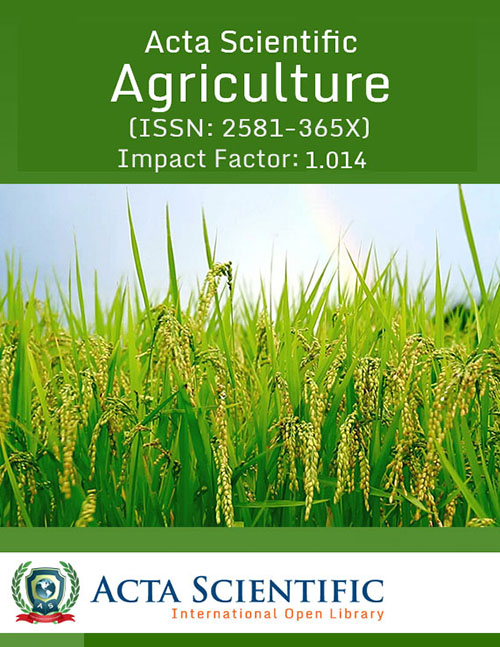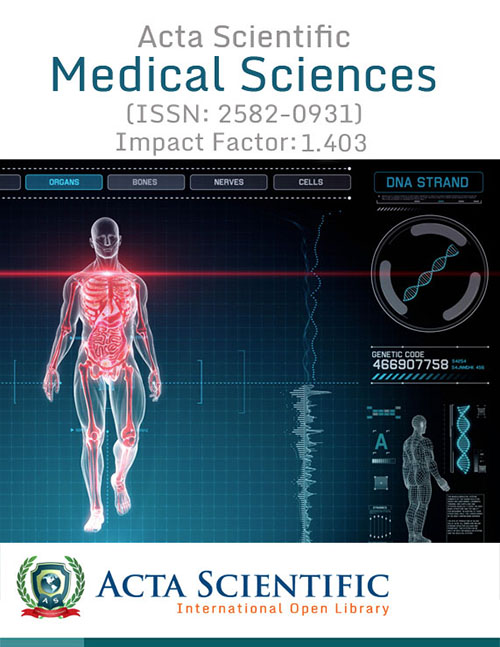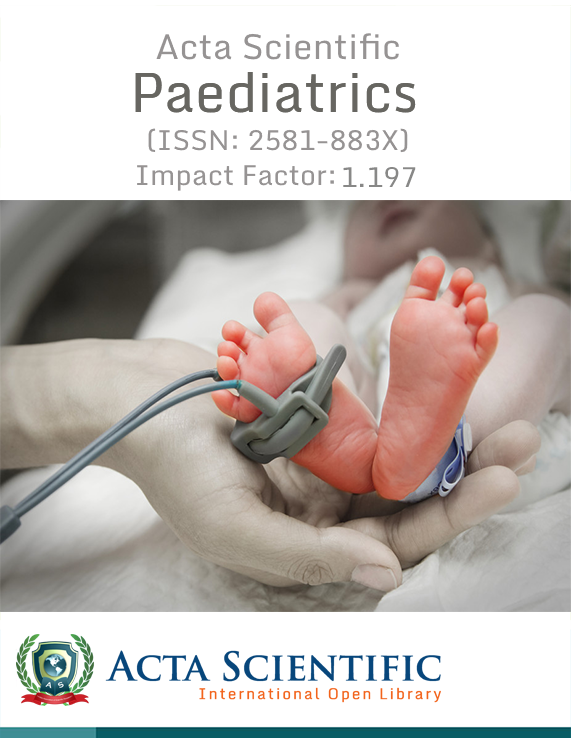Acta Scientific Ophthalmology (ASOP)
Review Article Volume 3 Issue 5
Patrícia Rodrigues*
Optometrist and Sport Vision Specialist, Portugal
*Corresponding Author: Patrícia Rodrigues, Optometrist and Sport Vision Specialist, Portugal
Received: March 25, 2020; Published: April 21, 2020
Abstract
The ability to see and then create an appropriate motor response is central to optimal sports performance. Elite athletes face intense visuo-motor demands requiring millisecond-level decision making to convert vision into action. Some crucial skills in competition are directly linked to the visual process. It is helpful to classify the areas of assessment in order to better understand how the factors affect performance. It is analyzed a routine check in sports vision consultation, which involves the evaluation plan routine of primary and secondary skills with direct influence on sports performance. These abilities are assessment with an approach to direct correlation with the sporting skill that interferes; the way it should be evaluated and the instruments available on the market. Sport vision training aproaches provide another opportunity for the athlete to enhance vision and visual performance factors that are importante for their sport. In most sports, vision is critical element for sucessful performance and an eyecare professional should be proficient in assessing and training athletes' high-performance vision skills.
Keywords: Sports Vision; Vision Motion; Sports Vision Evaluation; Sports Vision Training; Athletic Performance
References
- Laby D and Kirschen DG. “A new model for Sports and Performance Vision”. Vision Development and Rehabilitation2 (2018): 91-97.
- Kirschen DG and Laby DL. “The role of sports vision in eye care today”. Eye Contact Lens3 (2011): 127-130.
- Miller B and Clapp W. “From Vision to Decision: The Role of Visual Attention in Elite Sports Performance”. Eye and Contact Lens 3 (2011): 131-139.
- Mann DT., et al. “Perceptual-cognitive expertise in sport: a meta-analysis”. Journal of Sport and Exercise Psychology 29 (2007): 457-478.
- Voss MW., et al. “Are expert athletes expert in the cognitive laboratory? A meta-analytic review of cognition and sport expertise”. Applied Cognitive Psychology 24 (2010): 812-826.
- Burris K., et al. “Sensorimotor abilities predict on-filed performance in professional baseball”. Scientific Reports 8 (2018): 116.
- Gao Y., et al. “Contributions of Visuo-oculomotor Abilities to Interceptive Skills in Sports”. Optometry and Vision Science 6 (2015): 679-689.
- Yilmaz A and Polat M. “Prosaccadic and antisaccadic performance of the athletes in different types of sports”. Biomedical Research3 (2018): 539-543.
- Babu RJ., et al. “Dynamics of saccadic adaptation: differences between athletes and nonathletes”. Optometry and Vision Science12 (2005): 1060-1065.
- Abernethy B. “Training the visual-perceptual skills of athletes: insights from the study of motor expertise”. The American Journal of Sports Medicine 24 (1996): S89-S92.
- Abernethy B. “Visual search strategies and decision-making in sport” International Journal of Sport Psychology 22 (1991): 189-201.
- Abernethy B and Wood JM. “Do generalized visual training programmes for sport really work? An experimental investigation”. Journal of Sports Sciences3 (2001): 203-222.
- Piras A., et al. “Response Time, Visual Search Strategy, and Anticipatory Skills in Volleyball Players”. Journal of Ophthalmology (2014).
- Erickson GB. “Sports Vision: Vision Care for the Enhancement of Sports Performance”. Butterworth- Heinemann, Oxford UK (2007).
- Jorge J and Fernandes P. “Static and dynamic visual acuity and refractive errors in elite football players”. Clinical and Experimental Optometry 102 (2019): 51-56.
- Coren S and Porac C. “Monocular asymmetries in visual latency as a function of sighting dominance”. American Journal of Optometry and Physiological Optics 12 (1982): 987-990.
- Shima H. “Ocular dominance affects magnitude of dipole moment: an MEG study”. Neuro Report12 (2010): 817-821.
- Mendola J and Conner I. “Eye dominance predicts fMRI signals in human retinotopic cortex”. Neuroscience Letters1 (2007): 30-34.
- Winton K. “Visionpro: vision training for athletes to see their full potential”. Independently published (2019).
- Teig D. “High Performance Vision How to improve your visual acuity, hone your motor skills and up your game”. SquareOne Publishers (2015).
- Gallicchio G., et al. “Assessing ocular during performance of motor skills using electrooculography”. Psychophysiology 55 (2018): e13070.
- Noel H and Memmert D. “Eye tracking in high-performance sports: Evaluation of its application in expert athletes”. International Journal of Computer Science and Security 2 (2018): 182-203.
- Piras A., et al. “Response Time, Visual Search Strategy, and Anticipatory Skills in Volleyball Players”. Journal of Ophthalmology (2014).
- Knudson D and Kluka D. “The impact of vision and vision training on sport performance”. Sport Performance (2013): 17-24.
- Ridini LM. “Relationship between psychological functions test and select sport skills of boys in junior high”. Research Quarterly of the American Association for Health, Physical Education 39 (1968): 674.
- Graybiel A., et al. “Russian studies of vision in relation to physical activity and sports”. Research Quarterly of the American Association for Health, Physical Education 26 (1995): 240.
- Jordet G. “Perceptual Training in Soccer: An Imagery Intervention Study with Elite Players”. Journal of Applied Sport Psychology2 (2005): 140-156.
- Smith TQ and Mitroff SR. “Stroboscopic training enhances anticipatory timing”. International Journal of Exercise Science 4 (2012): 344-353.
- McGuckian T. “The impact of constraints on visual exploratory behavior in football”. Studies in Perception and Action (2017): 85-87.
- Buys JHC and Ferrira JF. “The development of norms and protocols in sports vision evaluation”. South African Optometrist 1 (2010): 21-28.
- Yanoff M and Erickson G. “Advances in Ophthalmology and Optometry”. Elsevier 3 (2018): 1-19.
- Parsons B., et al. “Enhancing cognitive function using perceptual-cognitive training”. EEG and Clinical Neuroscience Society 47 (2016): 37-47.
- Legault I., et al. “Healthy older observers equivalent perceptual-cognitive training benefits to young adults for multiple object tracking”. Frontiers in Psychology 4 (2013): 323.
- Legault I and Faubert J. “Perceptual-cognitive training improves biological motion perception: evidence for transferability of training in healthy aging”. Neuroreport 23 (2012): 469-473.
- Mangine GT., et al. “Visual tracking speed is related to basketball - specific measures of performance in NBA players”. The Journal of Strength and Conditioning Research 28 (2014): 2406-2414.
- Romeas T and Faubert J. “Soccer athletes are superior to non-athletes at perceiving soccer specific and non-sport specific human biological motion”. Frontiers in Psychology 6 (2015): 705.
- Smith T and Mitroff S. “Stroboscopic Training Enhances Anticipatory Timing”. International Journal of Exercise Science4 (2012): 344-353.
- Appelbaum LG., et al. “Stroboscopic visual training improves information encoding in short-term memory”. Attention, Perception, and Psychophysics 74 (2012): 1681-1691.
- Smith T and Mitroff S. “Stroboscopic Training Enhances Anticipatory Timing”. International Journal of Exercise Science4 (2012): 344-353.
- Appelbaum LG., et al. “Improved visual cognition through stroboscopic training”. Frontiers in Psychology 2 (2011): 276.
- Benguigui N., et al. “Time-to- contact estimation of accelerated stimuli is based on first-order information”. Journal of Experimental Psychology: Human Perception and Performance 29 (2003): 1083-1101.
- Bennett S., et al. “Intermittent vision and one-hand catching: The effect of general and specific task experience”. Journal of Motor Behavior 36 (2004): 442-449.
- Mitroff S., et al. “Enhancing Ice Hockey Skills Through Stroboscopic Visual Training - A pilot Study”. Athlectic Training and Sports Health Care 5 (2013): 1-5.
Citation
Citation: Patrícia Rodrigues. “Sports Vision: Influence on Athlete's Performance”. Acta Scientific Ophthalmology 3.5 (2020): 61-68.
Copyright
Copyright: © 2020 Patrícia Rodrigues. This is an open-access article distributed under the terms of the Creative Commons Attribution License, which permits unrestricted use, distribution, and reproduction in any medium, provided the original author and source are credited.
Journal Menu
Metrics
News and Events
- Certification for Review
Acta Scientific certifies the Editors/reviewers for their review done towards the assigned articles of the respective journals. - Submission Timeline for Upcoming Issue
The last date for submission of articles for regular Issues is April 30th, 2024. - Publication Certificate
Authors will be issued a "Publication Certificate" as a mark of appreciation for publishing their work. - Best Article of the Issue
The Editors will elect one Best Article after each issue release. The authors of this article will be provided with a certificate of "Best Article of the Issue". - Welcoming Article Submission
Acta Scientific delightfully welcomes active researchers for submission of articles towards the upcoming issue of respective journals.


















 +91 9182824667
+91 9182824667